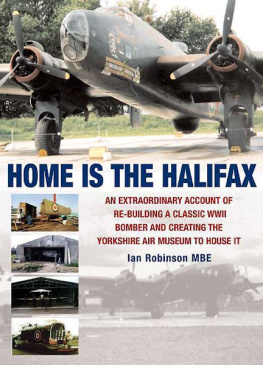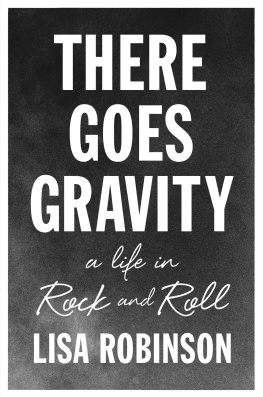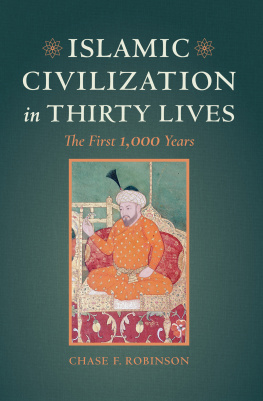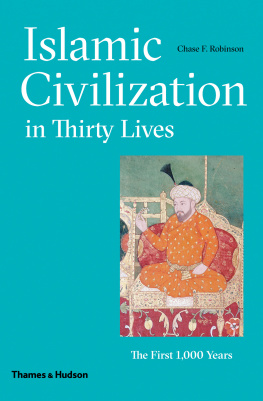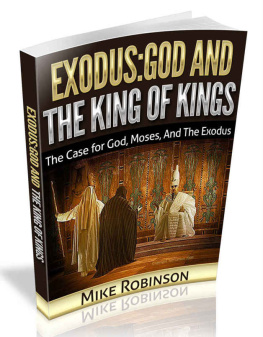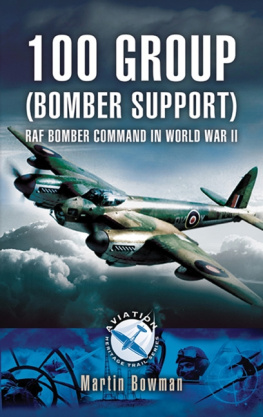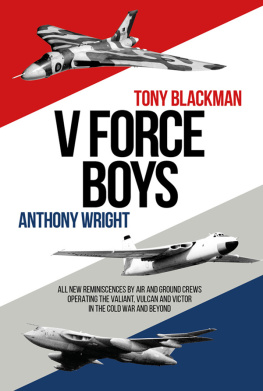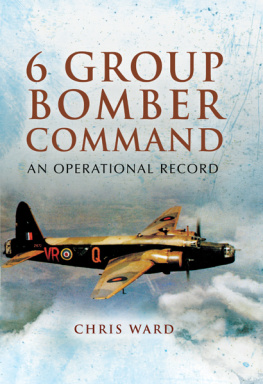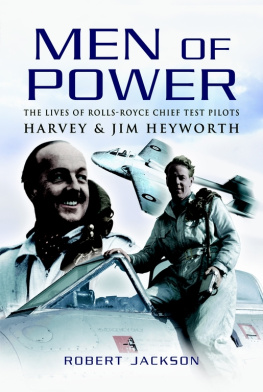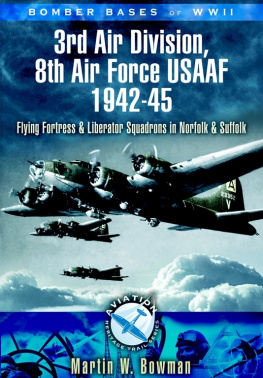

Published by
Grub Street
4 Rainham Close
London
SW11 6SS
Copyright Grub Street 2010
Copyright text Ian Robinson MBE 2010
Copyright foreword Ken Ellis 2010
British Library Cataloguing in Publication Data
Robinson, Ian, 1925
Home is the Halifax: an extraordinary account of
rebuilding a classic WWII bomber and creating the
Yorkshire Air Museum to house it.
1. Halifax (Bomber) Conservation and restoration.
2. Yorkshire Air Museum History.
I. Title
623.7'463'0288-dc22
PRINT ISBN-13: 9781906502775
EPUB ISBN: 9781909166813
All rights reserved. No part of this publication may be reproduced, stored in a
retrieval system, or transmitted in any form or by any means electronic,
mechanical, photocopying, recording or otherwise, without the prior
permission of the copyright owner.
Cover design by Sarah Driver
Book design by Roy Platten, Eclipse, Hemel Hempstead.
Printed and bound in Slovenia by DZS Graphic.
Grub Street Publishing only uses
FSC (Forest Stewardship Council) paper for its books.
The publisher would especially like to thank FlyPast magazine for permission
to use the images between pages 73/74 and 83/84.
This book is about dogged determination, arising from convinced Yorkshire logic. And lest you think these words are too fawning, they come from a Lancastrian!
Ian Robinsons background gave him the sense of heritage, and his personality provided all the attributes necessary to see an ambitious project through to its glorious achievement.
The thinking was straightforward. There should be a Halifax on show at Elvington, where once Handley Pages under-praised stalwart flew on ops. There was no chance of an original, so the job was to recreate one, using as many genuine, or kindred, components as possible. A hen coop that once bashed the circuit at Stornoway, a Berlin Airlift-era Hastings, engines from a French transport, contributions from friends and colleagues worldwide, all contributed to the formation of a masterpiece Friday the 13th.
Cries of Its not a proper one! didnt faze Ian and his team. But the detractors couldnt see how moved former air and ground crew were at being reunited with their warhorse.
I could have no better proof than when I phoned Ian to ask a favour. Could I bring a friend to see Friday? He had trained as a mid-upper gunner on Halifaxes and it would make an emotive birthday present. Typically, the answer was an unhesitating yes. Derek got to revisit his office and spent a while deep in reflection. Since its inception, Friday has always been a peoples aircraft Ian and the Yorkshire Air Museum would have it no other way.
Todays increasingly bureaucratic and beige-coloured world could do with more people of Ian Robinsons ilk.
Ken Ellis
Editor FlyPast
| Introduction and Acknowledgements |
When I came home after a spell in hospital in November 2008, my dear wife frequently told me that recording my experiences at the Yorkshire Air Museum Allied Air Forces Memorial from 1983 to 1999 would be therapeutic. Several friends joined in, and eventually I gave in and started writing what is now Home is the Halifax . How right they were. Im sure there are lots of incidents which Ive forgotten about, but memories happy memories came flooding back.
In the early 1980s whenever the thought of retirement entered my head, my main concern was how Id fill my spare time. Having always been fully employed since the age of sixteen, the prospect of too much time on my hands was a bit frightening. But I neednt have worried.
In 1983 I read an article in The Yorkshire Post which included an emotive photo of a flight of Jet Provosts over-flying Elvington airfield. Stood watching were Rachel Semlyen and Squadron Leader Ian Wormald. The article went on to explain they were considering establishing a museum on the site of the World War Two bomber base at Elvington in North Yorkshire. I was thrilled at the prospect having had a long-standing association with flying in Yorkshire, which thanks to them has now continued to this very day. We joined forces and soon people of all ages and from all corners of the country were keen to follow.
In those early days Rachel and I attended many squadron reunions which were taking place in various parts of the country to drum up support. One I vividly remember was in Harrogate when 433 Squadron, Royal Canadian Air Force had gathered and we met many veterans who had flown Halifaxes from Skipton-on-Swale. One individual who became a great friend had served as a squadron leader pilot, and he was full of enthusiasm for the project. His name was Wib Pierce and he was typical of literally hundreds of Canadians whom we came to know, including General Reg Lane and General J. Hull. At all of these reunions we met with so much encouragement and many people became donors, volunteers, friends, or all of those things! The Canadians were later to play a very significant part in the development of the museum and many happy occasions are referred to in this book.
Another name which springs to mind is Doug Dent. He served with 10 Squadron at Melbourne (Yorks) and during the post-war years he became a leading light in 10 Squadron Association. This squadron was in existence until fairly recently, flying VC10s, and Doug arranged flights for some of us when the squadron were carrying out air-to-air refuelling exercises. Colin Long also played such an important role in our development. He served with 35 Squadron who were the first to be equipped with the Halifax and he eventually became part of the pathfinder group. Both Doug and Colin loved the Halifaxes they worked on and woe betide any Lancaster man who got involved in the conversation.
I still have a copy of a document prepared for us by Chris Dunham. It records over 1,000 names and addresses of Yorkshire Air Museum members and is dated May 1989. Of course, some people were to leave us but many more were to join. In the beginning at Elvington visitors appeared from everywhere and many of them made generous offers to help us in our uphill struggle, as we had no financial resources at all.
Two such supporters were members of the guild of aviation artists (GAvA), Frank Wooton and John Rayson, both with a particular love of the Halifax. I had known John in the 1940s and some of his many contributions to the museum are recorded herewith. I wish I could recall the names of all those people who did join us, but writing this book has brought many faces in to my minds eye, such a happy bunch of volunteers and good friends, many of whom are no longer with us. But every bit of help, no matter what form it took and no matter whether it is recorded here or not, was so much appreciated by me and by the trustees at the time.
Many ex-YAM volunteers meet at Sherburn Aero Club at Sherburn-in-Elmet, a Yorkshire airfield which was opened in the 1930s and used extensively during World War Two. It is now one of the UKs major flying clubs and frequently hosts prestigious events such as aerobatic championships and the like. The idea for this association of veterans and aviation enthusiasts came from the-then chairman of the club, Mr. Neville Binks and another ex-RAF flier, Mr. Don Hewett. Having formed the group, they were stumped for a name, although they wanted to incorporate the word bomber. One day when the chief flying instructor, a well-known ex-RAF squadron leader, Jacko Jackson crossed the car park into the clubhouse and remarked that with all these posh cars outside they were more like barons than bombers, the name stuck. And so the association known as Bomber Barons was formed. What happy meetings we have every Thursday, with a lot of banter, some reminiscing and a great deal of friendship. Membership is now well over 100 and one of the highlights of the year is the annual Christmas lunch, happily and competently organised by Nev and his wife Val.

